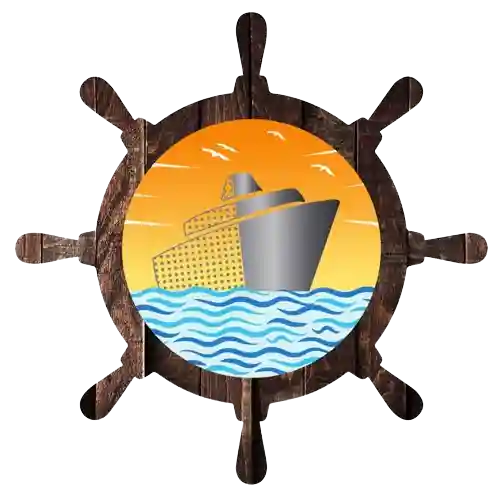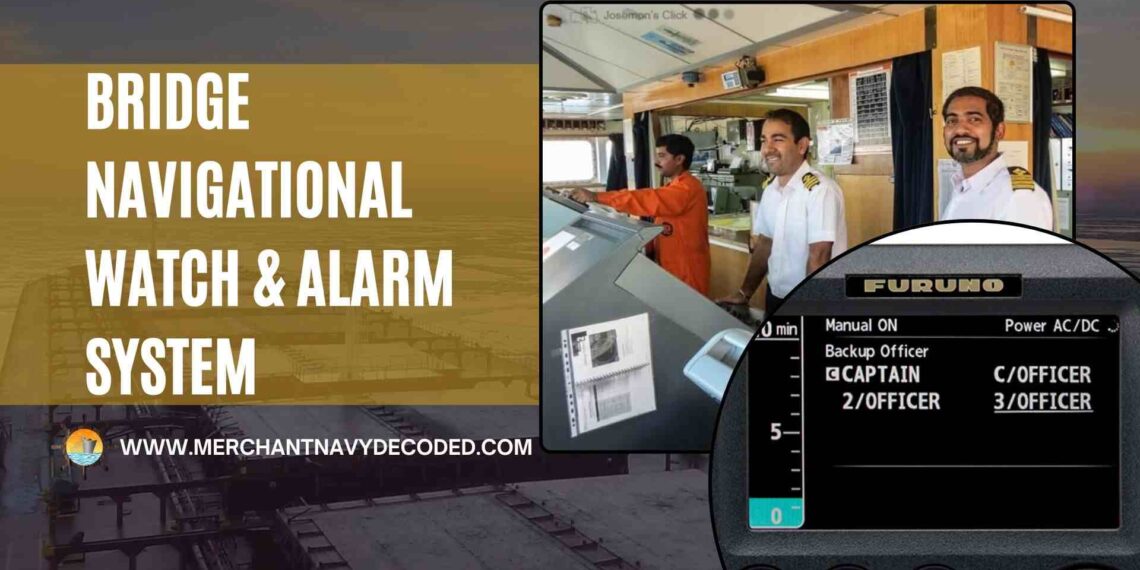What is BNWAS | Bridge Navigational Watch & Alarm System?
Table of contents
1:- Overview
Navigating a massive vessel across vast oceans is no simple feat. The safety of the ship and its crew hinges on the ability of the maritime officers to make quick and accurate decisions.
In emergencies, when every second counts, automated systems become indispensable. One such critical system is the Bridge Navigational Watch & Alarm System (BNWAS), which ensures maritime safety.
2:- What is BNWAS?
The Bridge Navigational Watch & Alarm System (BNWAS) is an advanced monitoring and alarm system designed to enhance maritime safety. It serves a crucial function by alerting other navigational officers or the ship’s master if the officer on watch (OOW) becomes incapacitated or fails to perform their duties effectively. This system is essential in preventing maritime accidents that could result from a lapse in the watchkeeping duties.
3:- What is the Purpose of BNWAS?
The primary goal of BNWAS is to monitor bridge activity and detect any potential operator disabilities that could lead to maritime accidents. It ensures that if the officer on watch becomes unable to perform their duties—due to accident, illness, or any other reason—the system will automatically notify backup OOWs or the ship’s master. The alerts are issued through a series of alarms and indications, prompting immediate intervention to prevent accidents.
4:- Importance of BNWAS
Historical incidents of maritime collisions and groundings have often been attributed to poor decision-making or ineffective watchkeeping. In emergencies, if a navigational officer is incapacitated, the consequences can be severe. BNWAS is also known as the “dead man alarm” for the navigation bridge, ensuring that if the OOW is unresponsive, the situation is promptly addressed by other crew members.
5:- Functionality of BNWAS
6:- BNWAS Operates Through a Sequence of Alerts
- Initial Alert: BNWAS initiates a visual indication (flashing light) on the navigation bridge to prompt the OOW to reset the system. This visual alert typically occurs after a dormant period of 3 to 12 minutes.
- First Stage Alarm: If the visual indication is not acknowledged within 15 seconds, an audible alarm sounds. This is designed to attract the attention of the OOW.
- Second Stage Alarm: If the first stage alarm is ignored, a secondary audible alarm, with a distinct tone, is triggered. This alarm is directed towards backup officers and the ship’s master.
- Third Stage Alarm: Should the second stage alarm also be ignored, a final, more urgent audible alarm is activated. This alarm is designed to be heard throughout the ship and wake sleeping crew members.
7:- Modes of BNWAS
BNWAS has three modes of operation:
- Automatic Mode: The system operates automatically without requiring manual intervention.
- Manual On Mode: The system can be manually activated as needed.
- Manual Off Mode: The system can be manually deactivated if required.
8:- Alarms and Indications in BNWAS
The BNWAS includes a reset function that can only be performed from designated areas on the bridge. This reset process involves a single operator action, which restarts the dormant period and cancels the alarms. Additionally, the system must feature an “Emergency Call” function to skip directly to the second and third-stage alarms if immediate assistance is needed.
8.1:- Additional Requirements
- BNWAS should be powered by the main power supply, with backup power for essential functions.
- The system’s accuracy must be within 5% or 5 seconds.
- The operational mode and dormant period settings should be controlled by the ship’s master.
- Integration with other bridge equipment may be required for seamless operation.
9:- Regulations for BNWAS
The International Maritime Organization (IMO) has established regulations for BNWAS under SOLAS Chapter V Regulation 19. These regulations mandate the installation of BNWAS on various types of ships, including:
- Cargo Ships of 150 Gross Tonnage and Upwards: For ships constructed on or after July 1, 2011.
- Passenger Ships (Any Size): For ships constructed before July 1, 2011, installation must occur no later than the first survey after July 1, 2012.
- Cargo Ships of 3,000 Gross Tonnage and Upwards: For ships constructed before July 1, 2011, installation must occur no later than the first survey after July 1, 2012.
- Cargo Ships of 500 Gross Tonnage and Upwards (but less than 3,000 Gross Tonnage): For ships constructed before July 1, 2011, installation must occur no later than the first safety survey after July 1, 2013.
- Cargo Ships of 150 Gross Tonnage and Upwards (but less than 500 Gross Tonnage): For ships constructed before July 1, 2011, installation must occur no later than the first survey after July 1, 2014.
BNWAS systems installed before July 1, 2011, may be exempted from full compliance with new standards at the discretion of the Administration.
10:- Conclusion
- The Bridge Navigational Watch & Alarm System (BNWAS) is a vital component of modern maritime safety. By continuously monitoring the bridge activity and ensuring that the Officer of the Watch (OOW) remains alert and capable, BNWAS helps prevent maritime accidents and enhances the overall safety of maritime operations.
- Understanding and implementing BNWAS not only complies with regulatory requirements but also significantly contributes to the safety and efficiency of maritime navigation.
- For seafarers, vessel operators, and maritime safety professionals, BNWAS represents a critical tool in maintaining vigilance and ensuring that any potential issues are addressed promptly and effectively.
Disclaimer :- The opinions expressed in this article belong solely to the author and may not necessarily reflect those of Merchant Navy Decoded. We cannot guarantee the accuracy of the information provided and disclaim any responsibility for it. Data and visuals used are sourced from publicly available information and may not be authenticated by any regulatory body. Reviews and comments appearing on our blogs represent the opinions of individuals and do not necessarily reflect the views of Merchant Navy Decoded. We are not responsible for any loss or damage resulting from reliance on these reviews or comments.
Reproduction, copying, sharing, or use of the article or images in any form is strictly prohibited without prior permission from both the author and Merchant Navy Decoded.




